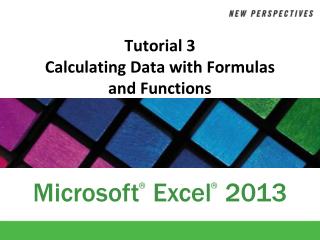

- #WHERE IS THE QUICK ANALYSIS TOOL IN EXCEL 2013 HOW TO#
- #WHERE IS THE QUICK ANALYSIS TOOL IN EXCEL 2013 PLUS#
#WHERE IS THE QUICK ANALYSIS TOOL IN EXCEL 2013 HOW TO#
Learn more about how to apply conditional formatting or analyze trends in data using sparklines.

When you like what you see, click that option. Select the data you want to examine more closely.Ĭlick the Quick Analysis button that appears in the lower-right corner of your selection.Įxplore the options on the Formatting and Sparklines tabs to see how they affect your data.įor example, pick a color scale in the Formatting gallery to differentiate high, medium, and low temperatures. Use the Quick Analysis tool for a Live Preview to try it out. Select the cells that contain numbers you want to add or count.Ĭlick Totals, move your cursor across the buttons to see the calculation results for your data, and then click the button to apply the totals.Ĭonditional formatting or sparklines can highlight your most important data or show data trends. Whether it's a sum, average, or count you want, Excel shows the calculation results right below or next to your numbers. Quick Analysis tools let you total your numbers quickly. Learn more about filtering data in an Excel table. To sort the data, click Sort A to Z or Sort Z to A. To filter data, uncheck the Select All box to clear all check marks, and then check the boxes of the data you want to show in your table. Click the arrow in the table header of a column. Now you can play with your data: Filter to see only the data you want, or sort it to go from, say, largest to smallest. If you like what you see, click the button.

To use the keyboard, hold down Shift while you press the arrow keys to select your data.Ĭlick the Quick Analysis button in the bottom-right corner of the selection.Ĭlick Tables, move your cursor to the Table button so you can see how your data will look. Select your data by clicking the first cell and dragging to the last cell in your data. That lets you quickly filter or sort your data for starters. If you don't see the number format you're looking for, click More Number Formats.Ī simple way to access a lot of Excel's power is to put your data in a table. Select the cells that have numbers you want to format. To distinguish between different types of numbers, add a format, like currency, percentages, or dates. Learn more about creating a simple formula. You can also press Ctrl+Enter if you want the cursor to stay on the active cell.
#WHERE IS THE QUICK ANALYSIS TOOL IN EXCEL 2013 PLUS#
Type a combination of numbers and calculation operators, like the plus sign (+) for addition, the minus sign (-) for subtraction, the asterisk (*) for multiplication, or the forward slash (/) for division.įor example, enter =2+4, =4-2, =2*4, or =4/2. That tells Excel that this cell will contain a formula. Try some simple formulas to add, subtract, multiply or divide your numbers. Select the cell to the right or below the numbers you want to add.ĪutoSum adds up the numbers and shows the result in the cell you selected.Īdding numbers is just one of the things you can do, but Excel can do other math too. A fast way to do that is by using AutoSum. When you've entered numbers in your sheet, you might want to add them up. Learn more about ways to enter data manually in worksheet cells. Press Enter or Tab to move to the next cell. For example, cell A1 on a new sheet.Ĭells are referenced by their location in the row and column on the sheet, so cell A1 is in the first row of column A. You can add as many sheets as you want to a workbook, or you can create new workbooks to keep your data separate.Ĭlick an empty cell. Each workbook has sheets, typically called spreadsheets. Create a new workbookĮxcel documents are called workbooks. To learn about new features, see What's new in Excel 2013. Tip: For a training course to help you create your first workbook, see Create your first Excel 2013 workbook.


 0 kommentar(er)
0 kommentar(er)
